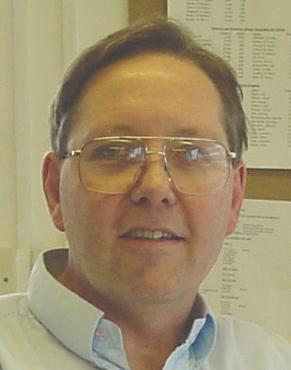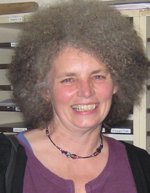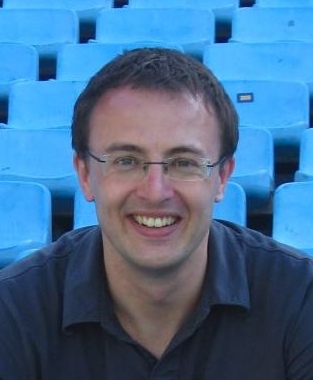Cambridge and India
Mathematics and Physics
Founded in 1992, the Isaac Newton Institute for Mathematical Sciences runs research programmes that attract renowned mathematical scientists at all stages of their careers from around the world. No fewer than 25 Fields Medallists and eight Nobel Prize winners have taken part in Institute programmes. It is not surprising, thus, that Andrew Wiles chose the Institute as the place to unveil his proof of Fermat's Last Theorem, which had eluded mathematicians for over 350 year.
Around 20 Indian researchers visit the Newton Institute each year to take part in its programmes. Indian mathematicians who have worked at the Institute as Rothschild Visiting Professors include Professor T V Ramakrishnan of the Indian Institute of Science, Professor A Sen of the Harish-Chandra Research Institute and Professor D Dhar of the Tata Institute of Fundamental Research.
Quantum mechanics is considered the scientific community's most successful physical theory. Scientists at Cambridge are advancing understanding of the meaning of the theory, tackling its unification with gravity, and developing its implications for cosmology.
Quantum computation and quantum cryptology are new modes of information processing achieved by harnessing physical phenomena unique to quantum mechanics. The Centre for Quantum Computation is a group that brings together mathematicians, physicists and computer scientists to develop the theory and practical implementation of these revolutionary applications.
Professor Sir Richard Friend
Department of Physics
Expertise: organic polymers as semiconductors for wide range of uses, such as LEDS and transistors.
India links: collaboration with National Physical Laboratory, Delhi, and National Chemical Laboratory, Pune. [Homepage]
Dr Dave Green
Department of Physics
 Dr Green is a University Senior Lecturer whose research focus is on galactic radio astronomy, especially supernova remnants (particularly their radio emission mechanisms "filled-centre" remnants), neutral hydrogen, and studies of the interstellar medium in nearby galaxies.
Dr Green is a University Senior Lecturer whose research focus is on galactic radio astronomy, especially supernova remnants (particularly their radio emission mechanisms "filled-centre" remnants), neutral hydrogen, and studies of the interstellar medium in nearby galaxies.
India links: has been working closely with Indian academics at the National Centre for Radio Astrophysics (NCRA), Pune, India, since 2004. NCRA is part of the Tata Institute of Fundamental Research (TIFR), and is the host institute for the Giant Meterwave Radio Telescope (GMRT), the largest low-frequency radio telescope in the world.
[Homepage]
[Visit to the National Centre for Radio Astrophysics]
Dr Julian Huppert
Department of Physics
Julian is in the Cavendish Laboratory and the new Institute of the Physics of Medicine. His interests lie in unusual structures of nucleic acids, trying to understand both how they form and the biological roles they play.
India links: collaboration with Dr Yamuna Krishnan at NCBS in Bangalore, as well as others in Bangalore.
[Homepage]
Professor Peter Littlewood
Department of Physics
 Professor Littlewood is the Head Of Department (Physics) and previously headed the Theory of Condensed Matter (TCM) group at The Cavendish Laboratory. His research activities include the dynamics of collective transport (charge-density wave, Wigner crystal, vortex lattice); phenomenology and microscopic theory of high-temperature superconductors, transition metal oxides, and other correlated electronic systems; and optical properties of highly excited semiconductors. He also has interests in theoretical engineering: holographic storage, optical fibres and devices.
Professor Littlewood is the Head Of Department (Physics) and previously headed the Theory of Condensed Matter (TCM) group at The Cavendish Laboratory. His research activities include the dynamics of collective transport (charge-density wave, Wigner crystal, vortex lattice); phenomenology and microscopic theory of high-temperature superconductors, transition metal oxides, and other correlated electronic systems; and optical properties of highly excited semiconductors. He also has interests in theoretical engineering: holographic storage, optical fibres and devices.
India links: major collaboration with Tata Institute of Fundamental Research (TIFR) and the Indian Institute of Science (IISc) Bangalore on novel electronic materials and theoretical physics.
[Homepage]
[Visit to Kolkata, Jan 2009]
[Visit to TIFR, Sep 2008]
Dr Helen Mason
Department of Applied Mathematics and Theoretical Physics
St Edmund's College, Cambridge

Dr Mason is Assistant Director of Research at the Department of Applied Mathematics and Theoretical Physics and Fellow of St Edmund's College.
India links: Dr Mason has collaborated with Professor Durgesh Tripathi, a solar astronomer at the Pune-based Inter-University Centre for Astronomy and Astrophysics for over eight years studying the behaviour of the sun using data from various space missions and how it affects Earth.
[Homepage]
Professor Ulli Steiner
Department of Physics

Expertise: stability and structure formation of polymer films.
India links: collaboration with Professor Ashutosh Sharma, Department of Chemical Engineering, IIT, Kanpur.
[Homepage]
Dr David Tong
Department of Applied Maths and Theoretical Physics (DAMTP)
 Dr Tong is a Reader and Royal Society Research Fellow with the High Energy Particle Physics Group at DAMTP. His area of research is in quantum field theory, string theory, supersymmetry, solitons and cosmology.
Dr Tong is a Reader and Royal Society Research Fellow with the High Energy Particle Physics Group at DAMTP. His area of research is in quantum field theory, string theory, supersymmetry, solitons and cosmology.
India links: Adjunct Professor at the Tata Institute for Fundamental Research (TIFR), Mumbai; collaboration with Professor Sunil Mukhi at TIFR and Harish-Chandra Research Institute, Allahabad.
[Homepage]
Professor Bryan Webber
Department of Physics
 Professor Webber is a professor of Theoretical Physics and leader of the High Energy Theoretical Physics Group at the Cavendish Labs.
Professor Webber is a professor of Theoretical Physics and leader of the High Energy Theoretical Physics Group at the Cavendish Labs.
India links: collaboration with Dr K Sridhar at the Tata Institute for Fundamental Research (TIFR) in Mumbai.
[Homepage]
- In this section
- Mathematics & Physics
- Nanoscience & Materials
